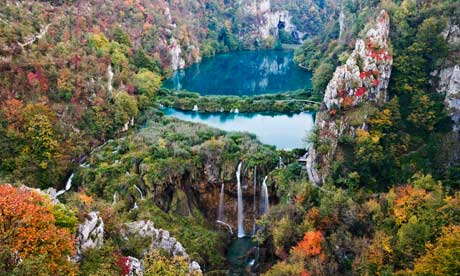The Danxia landform refers to various landscapes found in southeast and southwest China that "consist of a red bed characterized by steep cliffs". It is a unique type of petrographic geomorphology found in China. Danxialandform is formed from red-coloured sandstones and conglomerates of largely Cretaceous age. The landforms look very much like karsttopography that forms in areas underlain by limestones, but since the rocks that form danxia are sandstones and conglomerates, they have been called "pseudo-karst" landforms.
The first studies were conducted on what are now referred to as Danxia landforms were conducted at Mt. Danxiashan, located near Shaoguan, China. In the 20s and 30s Chinese geologists made an effort to learn more about these interesting geomorphic structures.Similar in looks to karst topography, danxia landforms are made up uplifted continental crust that has been faulted and eroded, exposing large scarps of layered rock, red in color.
The first studies were conducted on what are now referred to as Danxia landforms were conducted at Mt. Danxiashan, located near Shaoguan, China. In the 20s and 30s Chinese geologists made an effort to learn more about these interesting geomorphic structures.Similar in looks to karst topography, danxia landforms are made up uplifted continental crust that has been faulted and eroded, exposing large scarps of layered rock, red in color.




